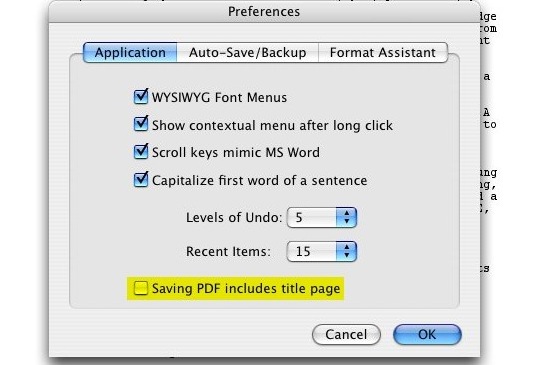![]() In Final Draft, what do you use the “General” element for? The manual describes its function negatively, saying only that it’s for whatever doesn’t fit into the other elements. Personally, I haven’t found a use for it yet and was wondering what the pros use it for.
In Final Draft, what do you use the “General” element for? The manual describes its function negatively, saying only that it’s for whatever doesn’t fit into the other elements. Personally, I haven’t found a use for it yet and was wondering what the pros use it for.
— Richard Budd
As far as I know, nothin’. I bitch about Final Draft a lot, but one good thing it can do is create new styles (er, elements) for unanticipated needs. I created one called “singing” for dialogue that is part of a song (11pt Verdana italic). So why would I need to re-appropriate “General?”
Perhaps if I were writing a treatment, or some sort of other non-screenplay document, and didn’t feel like putting everything in “Action.” It’s conceivable, I guess. I recently had to write an extended outline for Shazam!, but I used [Pages](http://www.apple.com/iwork/pages/) for its footnoting ability. The only advantage I could see to using Final Draft for an outline is its frustrating-but-consistent revision marks.
If any readers have a better explanation for the existence of “General,” I’d love to hear it.
 Yes, I’ll admit that I didn’t read the manual with version 7 of Final Draft. But this is a pretty questionable place to put this checkbox. After all, sometimes you’ll want to include the title page, sometimes you won’t. Does it really make sense to have this be an application-wide preference, housed in a panel that has nothing to do with printing, saving or the specific document you’re working on? It’s pretty much the last place I’d think to look for it.
Yes, I’ll admit that I didn’t read the manual with version 7 of Final Draft. But this is a pretty questionable place to put this checkbox. After all, sometimes you’ll want to include the title page, sometimes you won’t. Does it really make sense to have this be an application-wide preference, housed in a panel that has nothing to do with printing, saving or the specific document you’re working on? It’s pretty much the last place I’d think to look for it.